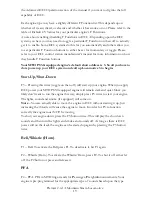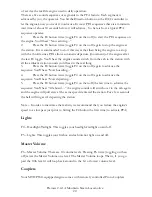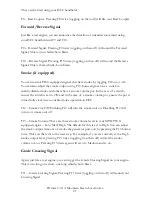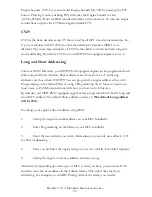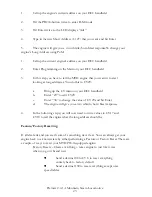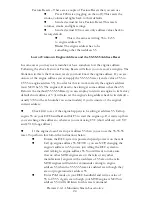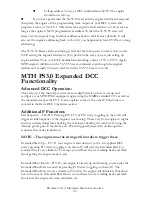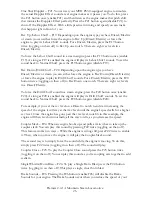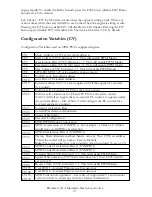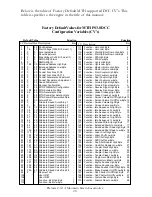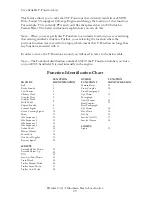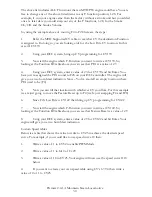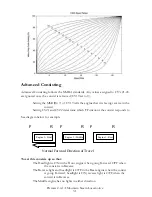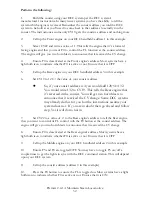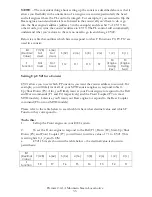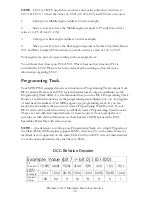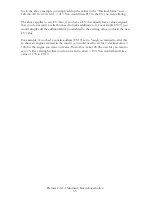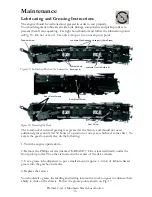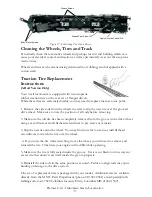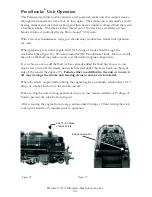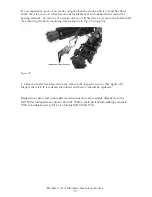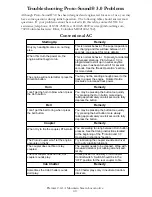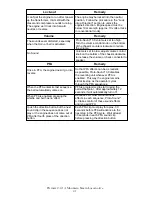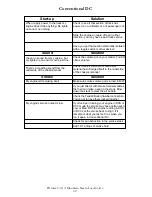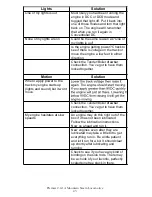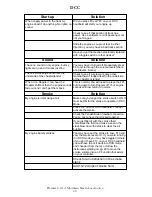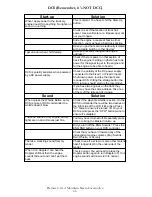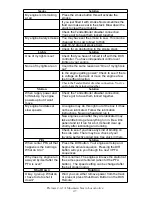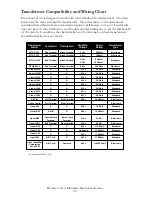
Premier 2-4-1A Mountain Steam Locomotive
33
NOTE
– The convenient thing about setting up the consist as described above is that it
allows you flexibility in the orientation of an engine in a consist; particularly the head
and tail engines where the FL control is integral. For example, if you wanted to flip the
Rear engine around and make it face forward in the consist all you'd have to do is go
into the Rear engine's address (address 3 in the example) and clear bit 7 of CV19. In
other words, just write the consist's address to CV19. The FL control will automatically
understand what you've done so there is no need to go in and change CV22.
Below is a table that outlines which bits correspond to what F Functions F0, F9-F12 are
used in a consist:
Bit
(Decimal
Value)
7 (128)
Not
Used
6 (64)
Not
Used
5 (32)
4 (16)
3 (8)
2 (4)
1 (2)
0 (1)
F
Function
Not
Used
Not
Used
F12
F11
F10
F9
F0
(Engine
Facing
Rev)
F0
(Engine
Facing
Fwd)
Setting Up CV21 for a Consist
CV21 allows you to set which F Functions you want the consist address to control. For
example, you will likely want all of your MTH consist engines to respond to Start-
Up/Shut Down (F3). Also, you'll likely want at your Front engine to respond to the Bell
and Horn commands (F1 and F2, respectively) and the Front Coupler (F7 on most
MTH models). Likewise, you'll want your Rear engine to respond to the Rear Coupler
command (F8 on most MTH models).
Please refer to the table below to see which bits have what decimal value and which F
Function they correspond to.
To do this:
1.
Call up the Front engine on your DCC system
2.
To set the Front engine to respond to the Bell (F1), Horn (F2), Start-Up/Shut
Down (F3) and Front Coupler (F7) you will want to write a value of 71 to CV21. This
is setting bits 0, 1, 2, and 6 ON.
a.
CV21's bits are shown in the table below – the decimal value is shown in
parenthesis:
Bit
(Decimal
Value)
7 (128)
6 (64)
5 (32)
4 (16)
3 (8)
2 (4)
1 (2)
0 (1)
F
Function
F8
F7
F6
F5
F4
F3
F2
F1
Summary of Contents for Premier 2-4-1A
Page 96: ......

